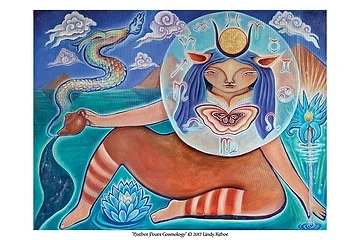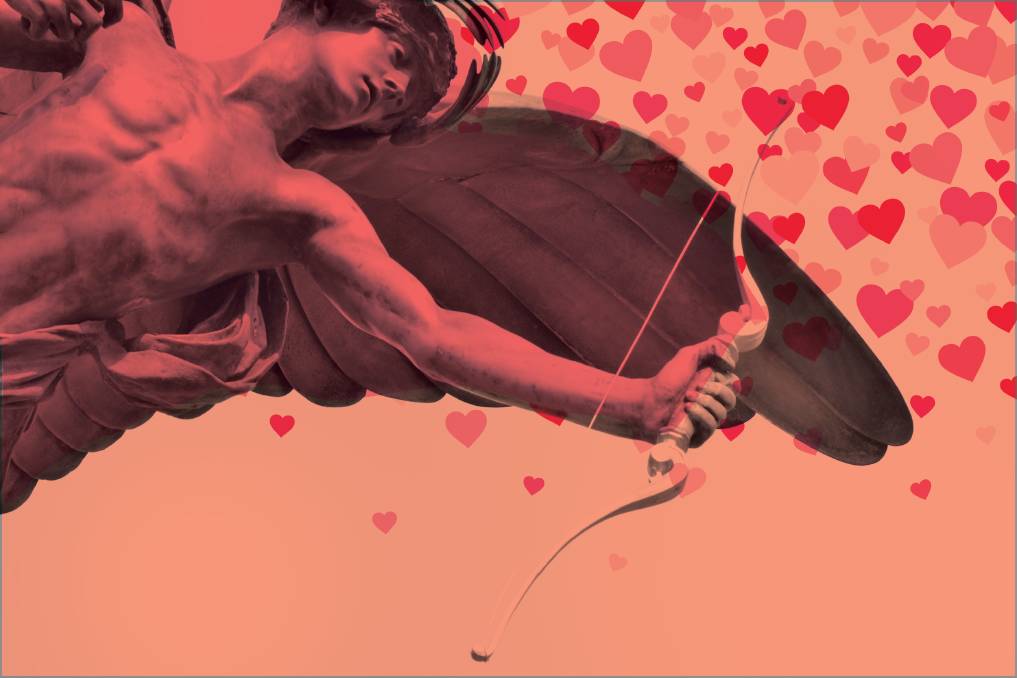We are all familiar with the famous tale of cute little Cupid, but how about an evil or not-so-cute version? Even the gods have been known to perform a little strip tease, spy on others in the bathroom, drink too much, or teach the shepherds how to masturbate. Even Santa has an evil counterpart – Krampus.
What Is the Meaning Behind These 9 Non-Traditional Gods?
Have you ever wondered why some gods are associated with non-traditional topics such as lust, promiscuity, and alternative love? Well, it turns out that these 9 non-traditional gods have a deeper meaning behind them. From the Greek god Eros to the Hindu god Kama, today we will explore the stories of these 9 gods and learn about their significance in ancient mythology. So let’s dive in and find out what lies behind these mysterious deities.
The 9 Lustful Gods & Their Unique Stories
They are the source of inspiration for many writers and storytellers. From Aphrodite, goddess of love, to Zeus, king of the gods – each god has a unique story to tell. Whether it’s Eros’ passionate love for Psyche or Pele’s fiery temper – these stories will captivate your imagination and bring you on an epic journey through ancient mythology.
1. Lxcuiname: (Aztec)
There were four females appearing simply as sex goddesses or specifically as the Lxcuiname, a word of doubtful meaning. We are told that the Lxcuiname in early times came up from the Gulf coast to Tula, bringing a cult act wherein Huaxtec warriors who had been captured were shot to death with arrows. The Lxcuiname were looked upon as the wives of those who were about to be sacrificed in that fashion.

These four sisters were individually named the Oldest, the Younger, the Middle One, and the Youngest, names which easily became appended to women who were prone to sexual excesses. When merged into one, the
four sisters became Lxcuina, patroness of prostitutes and loose women, and also the wife of the lord of the dead. Adulterous women and prostitutes who wished to cleanse themselves of the stain attached to their improprieties could go at midnight to crossroads (the haunt of the Lxcuiname), disrobe, and depart naked-thus leaving their sins behind them. Nevertheless, these four stands for more than mere sexual desire, for their mythology states that they were present as a sisterhood in the darkness which preceded the first rising of the fifth sun and that they, along with Mimixcoa, represent the stars.
 2. Pan (Greek)
2. Pan (Greek)
This studly Greek fertility god is well known for his sexual prowess and is typically portrayed with an impressively erect phallus. Pan learned about self-gratification via masturbation from Hermes and passed the lessons along to shepherds. His Roman counterpart is Faunus. Pan is a distinctly sexual god, often described in legends regarding his lusty adventures.
3. Aenghus Og (Celtic)
This young god was most likely a god of love, youthful beauty, and poetic inspiration. At one time, Aenghus went to a magical lake and found 150 girls chained together — one of them was the girl he loved, Caer Ibormeith. All the other girls were magically turned into swans every second Samhain, and Aenghus was told he could marry Caer if he was able to identify her as a swan. Aengus succeeded and turned himself into a swan so he could join her. They flew away together, singing exquisite music that lulled its listeners to sleep.
4. Min (Egyptian)

An ancient Egyptian God whose cult originated in the predynastic period (4th millennium BCE). He was represented in many different forms but was most often represented in male human form, shown with an erect penis which he holds in his left hand, and an upheld right arm holding a flail. As Khem or Min, he was the god of reproduction; as Khnum, he was the creator of all things, “the maker of gods and men”.
How These Gods Represent Different Types of Love
Love comes in many forms and shapes. Ancient Greek gods have been known to represent different types of love, from polyamory to divine love affair myths. In this section, we will explore how these gods represent different types of love and the implications their stories have for our lives today.
5. Yue Lao (Chinese)
Yue Lao, otherwise known as “The Man under the Moon,” is a popular figure in Chinese mythology, as he is the matchmaker and overseer of heterosexual marriage. Widely connected with the red thread of destiny, Yue Lao is often seen as a benevolent deity, binding two people’s hearts together in love and marriage.
The best-known story involving Yue Lao is that of Wei Gu and his quest to find a wife. After years of unsuccessful attempts, Wei Gu came upon Yue Lao reading from the book of marriages. Insisting he know who his future wife was, Wei Gu was shown a vision of an old woman with a young child, living in poverty. Distraught that the old woman was to be his wife, Wei Gu ordered his servant to kill the young child, though she escaped serious injury. After years passed, he finally found a suitable wife and noticed she had a scar. When Wei Gu asked about it, he was astonished to find that she had been the young child he tried to have killed (although he probably never told her; some secrets are best kept hidden).

6. Baron La Croix (Cajun)
Baron La Croix is often seen wearing a black tailcoat and carrying an elaborate cane. He is the ultimate suave and sophisticated spirit of Death – quite cultured and debonair. He has an existential philosophy about death, finding death’s reason for being both humorous and absurd. Baron La Croix is the extreme expression of individuality and offers to you the reminder of delighting in life’s pleasures.
7. Tu Er Shen (Chinese)
A relatively minor deity of Chinese mythology, Tu Er Shen—or Hu Tianbao, as he was known when he was mortal—is the god of homosexual love and marriage. Born during the Qing dynasty, Hu Tianbao found himself attracted to an official of the local government, spying on him naked through a hole in his bathroom wall. When his peeping was discovered, Tianbao was beaten to death. Moved by his unrequited love, the underworld gods took pity on him and restored him to life as the deity of homosexual relationships.
Perhaps because they were used as a slang term for homosexual men, rabbits are considered a symbol of homoerotic love in China, and Tu Er Shen is often depicted as a rabbit in the few shrines dedicated to him. Sadly, in many places where he is worshiped, homosexual activity remains a punishable criminal offense.
8. Hathor (Egyptian)
One of the most popular, and longest-lasting, of the Egyptian goddesses, Hathor was mentioned as early as the second dynasty (around 2890-2686 BC), and perhaps even before that. Since she survived for so long, Hathor took on a number of roles, including spells as the goddess of love, beauty, mining, and music. However, it was her time as the

Eye of Ra which led to her most interesting stories. The Eye of Ra is the term Egyptians used for the feminine counterpart to Ra, a role filled by a number of goddesses, including Ra’s daughter, Hathor.
Found in King Tut’s tomb, a story known as “The Destruction of Mankind” tells of a time when Hathor, at Ra’s insistence, became the war goddess Sekhmet in order to punish humans for their sinful ways. When the bloodthirsty goddess got out of control, Ra tried to stop his daughter—but failed. Just before she killed every last person on Earth, Ra managed to get her drunk. Hathor immediately forgot what she was doing and returned to normal. In another, possibly equally disturbing story, she performed a striptease for her father in order to cheer him up.
9. Tlazolteotl (Aztec/Toltec)
Tlazolteotl (Whose name can be variously translated as “Earth Goddess,” “Filth Goddess” or “Dirt Goddess”) is the Aztec and Toltec Goddess of guilty pleasures, Who both inspires and forgives carnal acts. She is a love and earth Goddess Who is said to remove sins from Her worshippers by absorbing them into Herself. The punishment for adultery under harsh Aztec law was death, but if the offender confessed to Tlazolteotl he or she was absolved and the law would not touch them. However, a person was only allowed one confession per lifetime, so people would leave it as long as they could

What Can We Learn from the Mythology of These Non-Traditional Gods?
For centuries, people have been fascinated by the tales of lustful gods and alternative relationship mythology. From the Greek gods to the Norse pantheon, these stories provide us with a unique insight into how we view relationships and our own sexuality. In this article, we’ll explore what we can learn from these non-traditional gods and their myths. We’ll look at how they can help us understand our own desires and relationships, as well as provide us with valuable lessons about love, lust, power dynamics, and more.






Leave a Reply